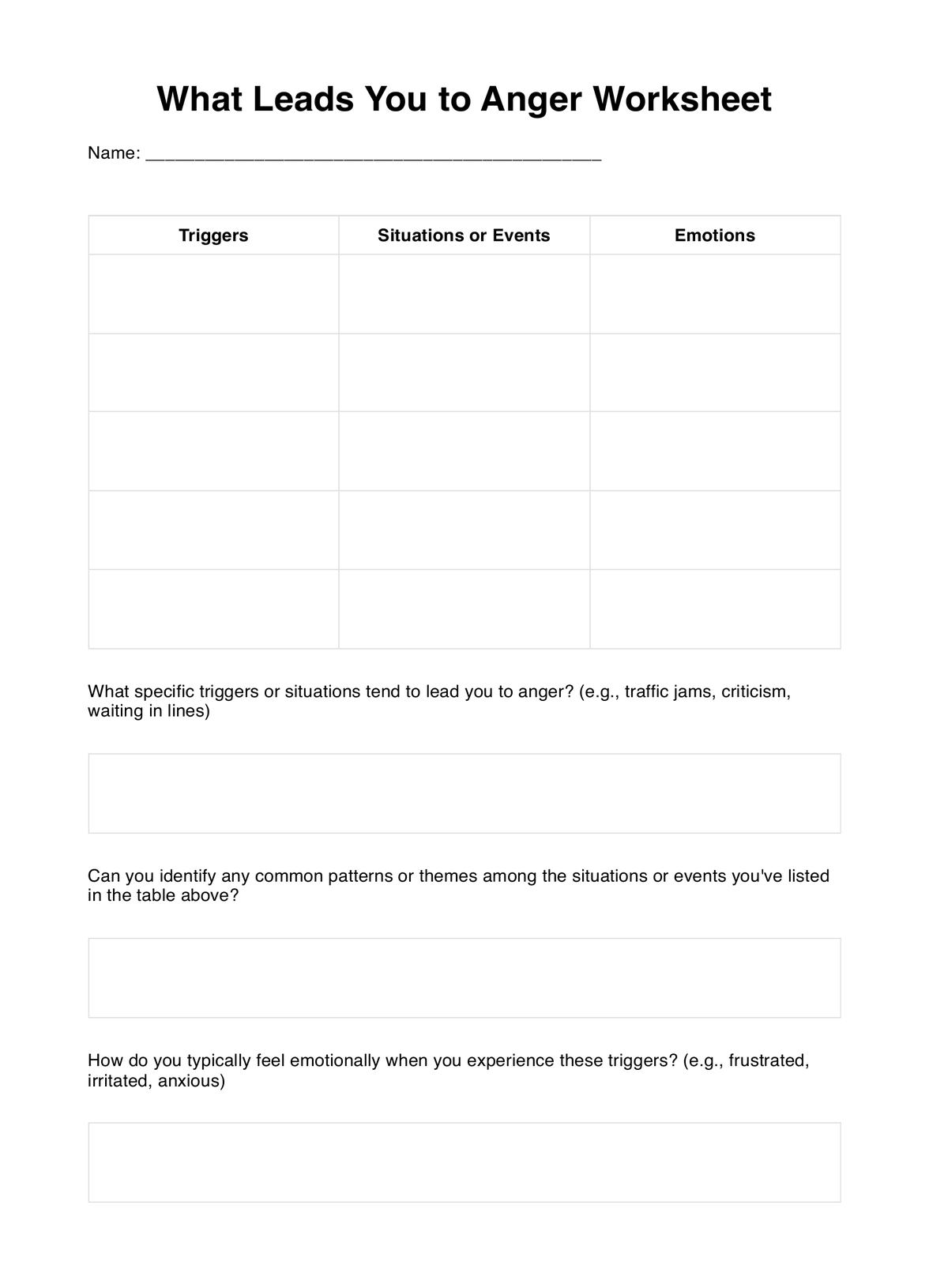Completion time for the worksheet varies but typically takes 15 minutes to an hour.

What Leads You to Anger Worksheet
Struggling with anger? Discover insights with the What Leads You to Anger Worksheet. Identify triggers & find healthier responses. Download now!
Use Template
What Leads You to Anger Worksheet Template
Commonly asked questions
This worksheet aids by enhancing self-awareness, helping identify anger triggers, and developing effective anger management strategies.
Use this worksheet when exploring and managing anger triggers and emotions. It is suitable for therapy, conflict resolution, and self-help.
EHR and practice management software
Get started for free
*No credit card required
Free
$0/usd
Unlimited clients
Telehealth
1GB of storage
Client portal text
Automated billing and online payments











